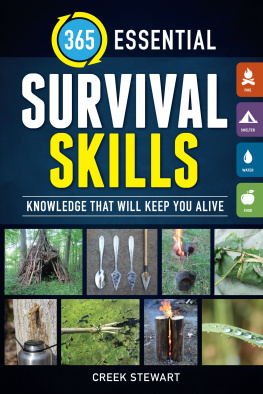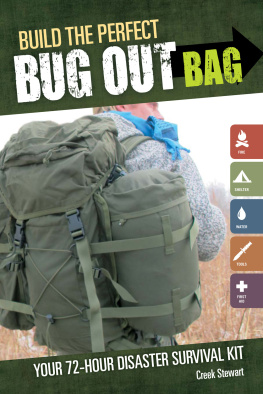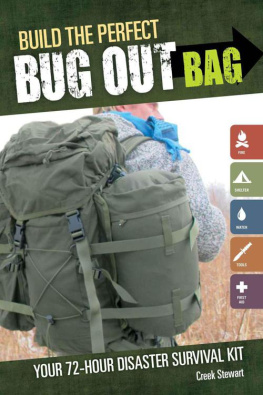Contents
Guide
SKILL# 1
How to Extract Birch Oil
Birch oil is what makes bark from the white birch tree so flammable. It has many uses when extracted, including a primitive adhesive, leather preservative, water proofer and insect repellant. In order to extract the oil it must be cooked out of the bark in a simple two-stage oven. First, fill a metal container (can be made from any fire-resistant material) with strips of birch bark. Make sure to put a lid on it because this container will need to be baked in a fire. When baked, the oil will cook from the bark and drain to the bottom of the container. A hole placed in the center of the bottom will allow it to drain out. A smaller container should be buried in the ground with the top flush with the bottom of the larger container. The larger container of bark should be placed directly over it, making sure the hole aligns with the top of the buried container. Finally, a fire should be built around the bark-filled container and kept burning for one hour. Wait until everything has cooled to retrieve the lower container now with the birch oil inside.

Birch bark packed into an old paint bucket with a small soup can buried to catch the oil.
SKILL# 2
Survival Knots: Constrictor Knot
All survivalists are masters of the rope. The constrictor knot is the anaconda of knots. Its typically used to coil around and bind things together, such as a bundle of sticks. It is essentially a combination between an overhand knot and a clove hitch. Watch video tutorial #1 for complete instructions at: www.creekstewart.com/365-book-videos
SKILL# 3
Makeshift Bush Branch Snowshoe
Walking in deep snow can be nearly impossible without snowshoes. Snowshoes increase the surface area of the feet and distribute the weight of a person to a larger area. This helps prevent sinking deep into the snow with every step. Makeshift bush shoes can be quickly and easily made from evergreen boughs that often grow in environments with heavy snow. Three to four evergreen boughs approximately 20 inches wide by 36 inches long should be bound together at the end using a constrictor knot. Make two of these, one for each foot. A flat cross brace approximately 1 inch thick by 10 inches long by 2 inches wide should be lashed across the bundle to support the ball of the foot. The heel should be free to lift so the shoe travels parallel with the snow, allowing for an easier and more natural step.
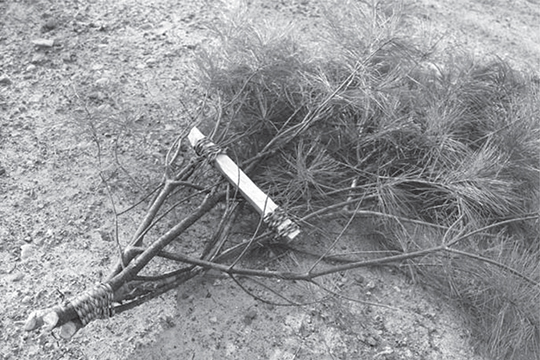
Snowshoe made from pine branches.
SKILL# 4
Figure 8 Snowshoe Hitch
The accompanying photo illustrates a field expedient method for binding snowshoes that allows the heel to lift freely from the back of the shoe. A bridge of rope is first tied across the brace that supports the ball of the foot. The foot toe should fit snugly under this bridge. Then, two bindings are tied to the rope bridge, one on each side. These are crossed over the top of the foot, wrapped around the back of the boot and tied at the front exactly like you would tie a bootlace.
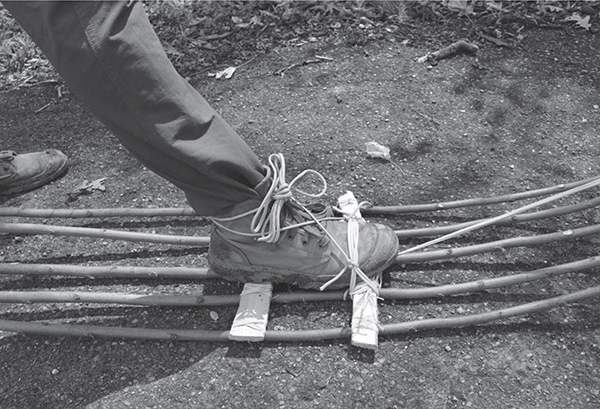
Simple snowshoe boot lashing.
SKILL# 5
How to Make a Tinder Bundle
The tinder bundle is a prepared nest of fibrous and dry materials. It is the part of a fire lay that is ignited first to start a fire. A tinder bundle consists of two main parts the body and the core. The body comprises the bulk of the tinder bundle. The core is the center of the tinder bundle where the ember or match will ultimately be placed. Imagine a cross between a football and a birds nest. It should be the size and shape of a football with a small depression in the middle about the size of a golf ball. The football portion should be made from dry fibrous tinder materials such as dead grasses, cedar bark, palm fibers, dead yucca leaf fibers, inner barks or plant fibers. A palm-size wad of your finest, fluffiest and driest material will comprise the core.
SKILL# 6
Three Fire Starting Tree Barks
Finding fire tinder is a critical survival skill. The bark from the following three trees makes excellent fire starting tinder:
- White Birch: The papery white outer bark and tan inner bark of the birch are rich in very flammable oils that will burn like crazy when struck with a ferro rod (must be fuzzed up) or match.
- Cedar: The stringy, fibrous bark of the cedar can be scraped and bushed between the palms of the hands to make one of the best tinder bundles Ive ever used.
- Cottonwood: The inner bark fibers of dead cottonwood trees make incredible fire tinder. They are thin and fibrous. Since its found beneath the thick outer bark its also typically very dry. Watch video tutorial #2 about identifying and using cottonwood bark fibers at: www.creekstewart.com/365-book-videos
SKILL# 7
Survival Trees: Cottonwood
Cottonwoods were a favorite among Native Americans across North America to form dugout canoes, often coal burned. They have a triangular shaped leaf with toothed edges. The bark is deeply fissured. Like the basswood, cottonwoods grow primarily around water. Ive seen massive cottonwoods along streams from Arizona to Virginia. The dead dry inner bark of the cottonwood makes incredible fire tinder because of its thin fibrous paper-like nature. The wood is soft and is an excellent candidate for bow drill hearth and spindle as well as hand drill hearth.
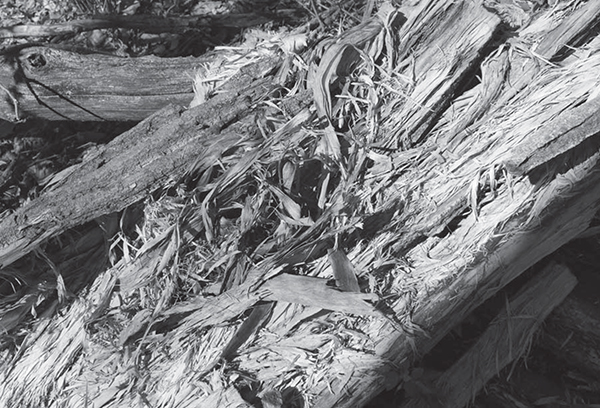
Cottonwood inner bark fibers.
SKILL# 8
Three Nutritious Winter Teas
Wild teas dont provide calories, but they do provide valuable vitamins, minerals and uplifting flavor. Here are three teas that can be made in winter when most other tea sources are not available.
- Rose Hip Tea: Rose hips, the small red berry fruits of the wild rose, make a mild rose flavored wild tea that is rich in vitamin C. Cut a small square of fabric and tie around six to 10 rose hips. Crush them with a stick and steep this makeshift tea bag in hot water for three to five minutes, then discard. Do not eat rose hips due to tiny inner hairs that will irritate the mouth and throat.
- Pine Needle Tea: Pine needle tea is very robust and rich in vitamin C. Crush a handful of pine needles and steep in hot water for 10 minutes. Then strain out the needles and drink.
- Birch Twig Tea: Boil a palm full of white birch twig tips about 2 to 3 inches in length in water for five minutes to brew a delicious, slightly sweetened tea.

Remaining rose hips after the roses have died away.
SKILL# 9
Survival Plants: Sotol (Desert Spoon)
Native to Americas arid Southwest, the sotol plant was used extensively for fire making by primitive cultures. It is an evergreen and produces long, thin, sword-shaped leaves in a circular pattern around the base. It can be readily identified by the 10- to 20-foot tall flower stalk that grows from the middle of the plant. The top resembles a bristly pipe cleaner. This dry, woody stalk is hands down the best wood for friction fires that I have ever used. In fact, primitive cultures used it in the Fire Plough method of fire starting.

